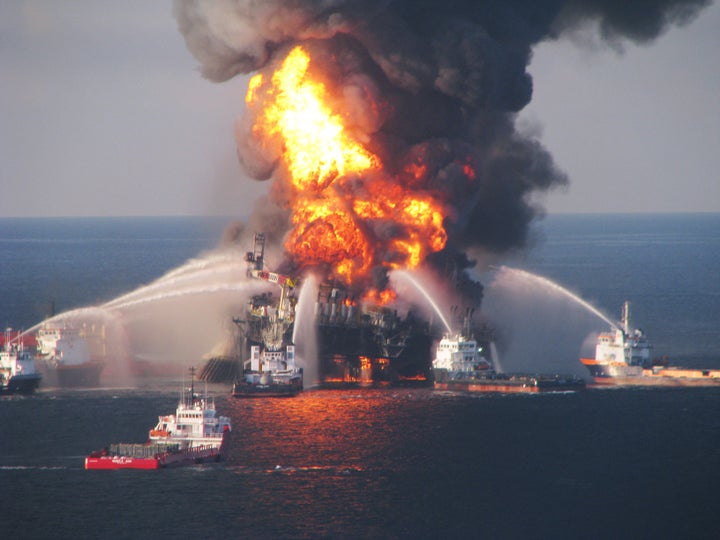
For over a decade, the oil industry has aggressively fought safety regulations intended to prevent accidents and blowouts on offshore oil drilling rigs.
Among the provisions opposed by oil giant BP and drilling contractors are those regarding equipment and procedures that are being closely examined for their role in the April 20 explosion that killed 11 workers.
The International Association of Drilling Contractors, a trade group which includes Transocean, the firm that operated the Deepwater Horizon rig, objected in 2000 to a proposed requirement to use blind-shear rams, a type of blowout preventer which seals out-of-control oil wells by pinching off the pipe. Due to a failure of that device on the Deepwater Horizon, the rig's crew was unable to prevent the massive gush of oil that still spews from the bottom of the ocean.
Claiming that the rate of accidents and incidents "is approaching zero," the group tried blunting the agency's argument that many previous incidents could have been ameliorated if the equipment had been used.
"We believe this trend is sufficient to obviate the need for MMS to mandate installation of this equipment," reads the group's letter to the Interior Department's Minerals Management Service, which has oversight of offshore oil drilling.
In addition, the group stated that it surveyed its members and found that the number of rigs that need to be re-fitted with blind-shear jams was actually double the MMS's estimate, and thus would prove too costly.
According to an MMS cost-benefit analysis, the requirement to install the equipment would benefit drilling contractors and oil producers from $0.8 million to $39.8 million due party to the avoidance of future blowout-related damages and costs
In 2004, the Offshore Operators Committee objected to MMS rules regarding minimum blowout prevention systems, requesting that testing of the devices be reduced from 10 minutes to 5 minutes.
In 2006, BP objected to MMS proposing a "best practice" for cementing techniques in deepwater drilling operations, emphasizing that operators should have "flexibility" when it comes to the critical procedure, which seals up the drilling hole and the gaps between the hole and pipe. As HuffPost has reported, possible flaws in Halliburton's cementing work on the Deepwater Horizon may also be to blame for the accident. As FireDogLake reported on Monday, Halliburton seems to have been aware of the risks posed by faulty cementing work, citing a presentation by the oil services giant last November.
As HuffPost first reported last week, BP, Transocean and other members of the oil industry vigorously objected to new safety regulations proposed by MMS last summer, which would have required them to submit their safety and environmental management programs to an audit every three years.
The industry's objections extended to measures intended to help clean up after an oil spill. Claiming that the petroleum industry had funded the Oil Spill Liability Trust Fund to $1 billion, the American Petroleum Institute wrote a 2000 letter to the Department of Transportatino, stating:
The petroleum industry should not be expected to pay for further OSTLF prevention expenditures for sources outside the petroleum industry, particularly since the petroleum industry's oil spill record has improved so much over the past decade.